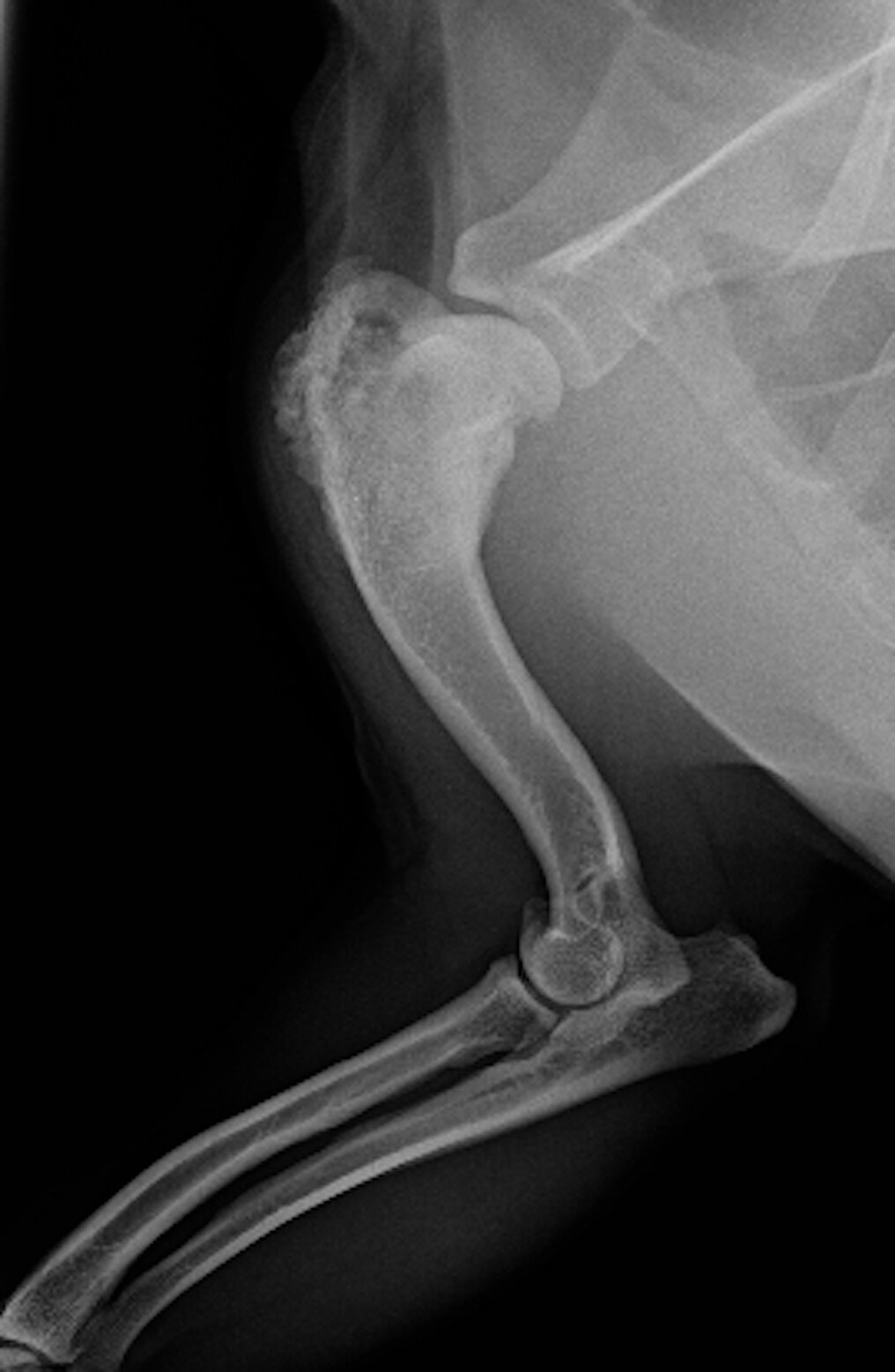Did you know radiation therapy can help dogs with bone cancer?
In a recent study of 82 dogs with appendicular (i.e. limb) osteosarcoma, treatment with a combination of chemotherapy and stereotactic radiation therapy (12 Gray daily radiation therapy treatment over three consecutive days) was associated with improved survival. The median (average) survival time was 1.1 years, which is similar to dogs treated with amputation followed by chemotherapy.
In contrast, conventional palliative radiation therapy plus chemotherapy was associated with a median survival time of five months.
In other studies, conventional palliative radiation therapy alone is associated with pain relief in 75% of treated dogs, for an average of two to three months.
Moreover, dogs that presented with low pain scores (defined as weight-bearing lameness, and/or absent or mild pain on physical examination) were more likely to benefit from combination radiation and chemotherapy with median survival times of 9.5 months, compared to 5.5 months, in dogs with high pain scores at presentation.
But what is stereotactic radiation therapy, and how is it different from conventional palliative radiation therapy?
Stereotactic radiation therapy is a localised form of treatment to try to kill or sterilise cancer cells. It allows precision delivery of high doses of radiation to the defined tumour target and relative sparing of surrounding normal tissues. Treatment planning is normally performed using advanced imaging techniques such as computed tomography (CT) scan. As mentioned above, treatment usually involves three high dose treatments of radiation therapy over three consecutive days.
The main advantages of stereotactic radiation therapy for dogs with osteosarcoma include good to excellent limb function, limb preservation for dogs that are not suitable candidates for limb-sparing surgery, and in comparison to conventional radiation therapy, normal tissues can often be spared (i.e. minimal acute radiation therapy side effects). The primary limitations include the high cost of treatment, a high risk of a pathologic fracture (approximately 30-60% of cases at a median time of six months to 1.7 years after radiation therapy), and in some countries (such as Australia), there is limited availability of stereotactic radiation therapy.
In comparison, conventional palliative radiation therapy aims are to improve limb function and alleviate pain. It is considered less effective than stereotactic radiation therapy. Treatment typically involves high dose radiation therapy delivered weekly over four weeks. Treatment planning is not precise and does not involve the use of advanced imaging techniques.
Therefore, for owners who do not wish to treat their dogs with amputation or limb-sparing surgery, stereotactic radiation therapy or palliative conventional radiation therapy are suitable alternatives.
Vets, if you have a question about this topic or a dog with osteosarcoma that you think may benefit from radiation therapy, please do not hesitate to get in touch by clicking here.

